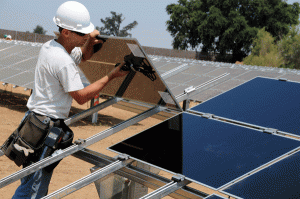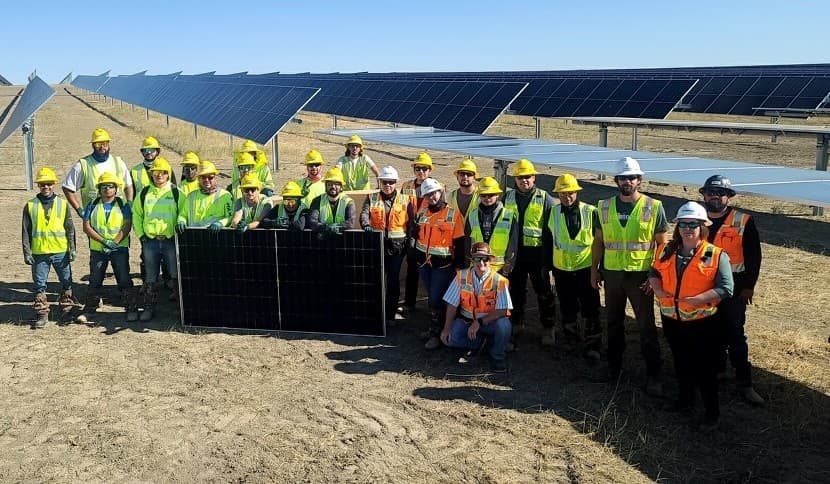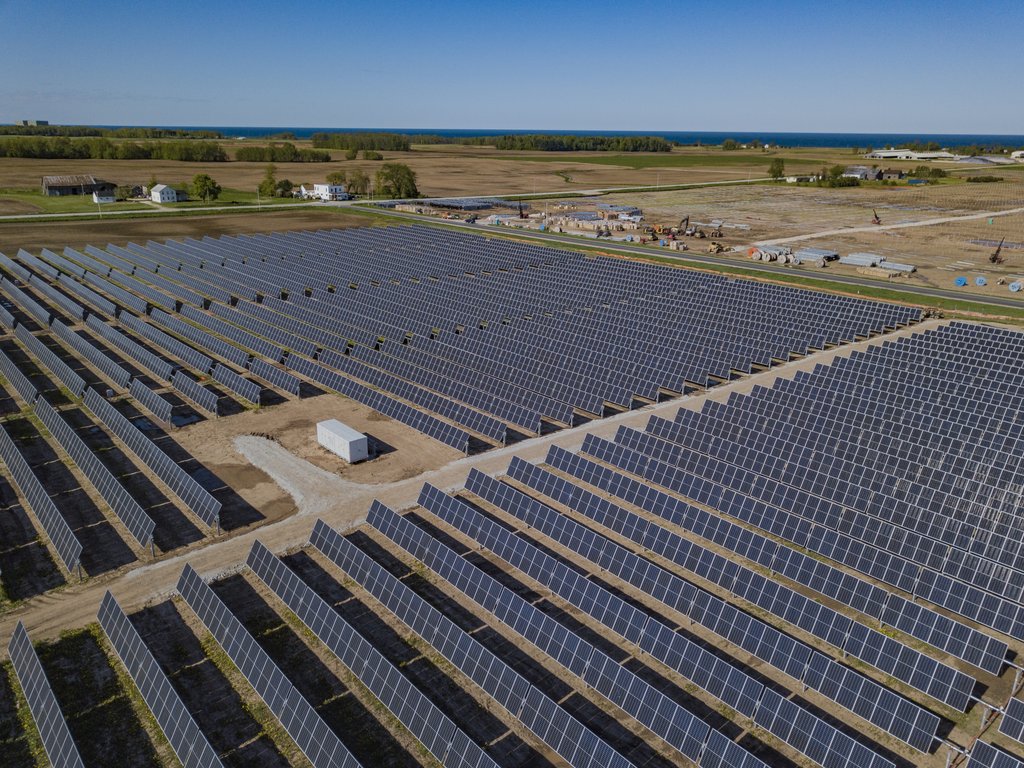Following the Rules
Communities have to weigh environmental concerns when considering alternative energy adoption.
By Peter J. Comodeca
The clamor in the United States for alternative energy to replace fossil fuels has caused many communities to revise their regulations, permitting processes and zoning requirements to both control and take advantage of the new alternative energy technologies. This evolution of local energy-related regulations has an impact on contractors and vendors in the alternative energy business.
Encouraging the use of wind, solar and biomass energy is a practice adopted by many communities. A major area of concern to local communities reviewing their alternative energy strategy is the environmental impact of alternative energy production on their community. It is a constant in the United States that all projects must comply with federal air and water pollution requirements. Depending on the project, the presence of asbestos, lead and ground contamination also has to be addressed and remediated; however, contractors need to be sensitive to additional environmental concerns that arise when alternative energy systems are regulated by local communities. This article focuses on the local environmental concerns of alternative energy systems rather than the larger-scale, less localized alternative energy sources of nuclear, geothermal and hydropower.
Wind energy environmental concerns are many. One of the recognized environmental concerns is the dedication of broad expanses of land for wind energy farms that may be otherwise better used; however, the actual wind turbine footprint on such farms is relatively small. Thus, wind farm land is usually dedicated to multiple uses to minimize the environmental impact and maximize economic benefit. Wind farm operators, contractors and communities have successfully mitigated the impact on the environment of a wind farm by allowing the continuation of farming, grazing and hunting on the wind farm.
An ongoing concern of local communities considering large-scale wind farm operations is the impact on wildlife and humans. Interference with the migratory patterns of birds and bats is a frequent topic of concern in the permitting process or in controlling ongoing operations of a wind farm. While relatively new to the United States, offshore wind farms pose similar concerns regarding the migratory paths and breeding grounds of fish, birds and aquatic mammals. Thus, contractors must be concerned with the siting of the wind farm, of individual turbines and of support structures.
From a human perspective, initial reaction to any wind farm or wind turbine proposed is that it will interfere with the scenic vistas, or the view, of those in the community. This issue will be a central topic of negotiation for every wind project and is usually resolved by balancing the location ultimately determined for the wind energy generation against the benefits perceived by the local community.
Locally, communities intent on updating master plans, permitting processes and zoning ordinances have to distinguish between residential and small industrial wind energy systems. Residential wind systems are generally less than 20 kW in size and usually have to be tailored to comply with local height, sound and physical appearance requirements. More often than not, such ordinances do not exist in many communities. Contractors and vendors must be aware that permitting may take longer as an ordinance evolves. The ordinance development process could become an asset to those contractors assisting in the process as regulations could result that favor certain types or models of wind energy systems.

Communities have successfully mitigated the impact on the environment of a wind farm by allowing the continuation of farming, grazing and hunting on site.
Small industrial wind systems are generally greater than 20 kW and up to 1.5 MW of power generation. The intent of such systems is to reduce a non-residential facilities’ use of utility supplied electricity. Small industrial wind energy systems also will be subject to local ordinances for height, placement and aesthetics. Again, few communities have industrial wind system ordinances, but permitting primarily focuses on where to place the systems as to minimize interference with roadways, public utilities, aviation and neighbors. Local ordinances also tackle a community’s concern to avoid potential catastrophes should a turbine blade break or a tower fall. This concern is addressed by restricting where a wind turbine can be placed and on pre-approving the design, components, engineering and other technical aspects of the proposed installation. While not strictly an environmental issue, contractors should be aware that local ordinances vary widely and do reflect the personality and environmental concerns of the community.
It also is common for communities to evaluate every application to install a wind energy system for shadow flicker, the strobe-like effect that can occur when the sun passes behind a wind system rotor blade.
The environmental concerns associated with solar energy systems generally are limited to the manufacturing process. Solar energy systems are passive after installation and generate no air pollution or other contaminating byproduct. From an environmentally aesthetic perspective, many local ordinances require ground-mounted solar energy systems to be installed in the backyard so as not to interfere with the appearance of a neighborhood. For contractors, this restriction could pose access issues, but not much more.

Solar energy systems do not have the same installation regulations as wind turbines, but there are concerns with the potential release of hazardous gasses if a panel breaks or catches fire.
Another environmental concern of communities regarding solar energy systems is the potential for the release of hazardous gasses where solar panels either break or are consumed by house or building fires. It is prudent, and may be required, to seek local fire department input or approval when interpreting solar energy ordinances or preparing permit applications.
Local communities also are concerned with the chemical components of a solar panel, which can become pollutants when a panel is irresponsibly thrown away, exceeds its life cycle or is somehow damaged and requires replacement. Thus, when evaluating which solar panel to propose from an environmental perspective, it may be relevant for contractors to evaluate the service life, reliability and recycling processes pertinent to any particular panel. This up-front assessment could be especially beneficial if contractors or vendors assist in developing a community ordinance.
Hazardous materials used to manufacture solar panels, such as silicon molecules, sulfur molecules and cadmium, pose dangers to workers. Contractors that interface with panel manufacturers must be aware of this risk. Protective equipment and protective work spaces are a means to minimize the environmental hazards to solar panel manufacturing employees.
Solar energy macro environmental concerns involve the effect on land usage caused by large solar energy farms. Large solar energy farms used by utilities can pose environmental issues with regard to indigenous plants and wildlife. Again, contractor attention to siting is critical.
Generating power from the burning of plant or organic matter is commonly referred to as biomass. Biomass uses diverse types of waste or renewable fuel such as timber, food processing waste, crops specifically grown for electricity, sewage and animal manure. The preeminent issue in biomass energy is how to properly marshal the various fuels to generate an energy benefit without any corresponding and overriding negative environmental impacts.
The strength of biomass is that it can generate electricity on schedule at any time, unlike wind and solar processes. Biomass can be used as a combustible in a power plant to generate steam for electrical generation. Biomass also can be converted into methane gas through a process called gasification to fuel generators, turbines and other electrical generating technologies.
Biomass, in either its combustible or gasification form, does generate harmful emissions. These emissions such as sulfur dioxide or nitrogen oxides are the same emissions generated by the burning of coal; however, these emissions can be greatly reduced through efficient biomass combustion, facility design and other available pollution control technologies, such as exhaust stack scrubbers. Emissions also can be controlled by the nature of the biomass product used at a power generating facility. Contractors need to be prepared to demonstrate that a project will have a negligible or tolerable impact on the environment through selection of an efficient project design and by the use of proper equipment.
Biomass energy can be used to generate electricity or power from materials that, left alone, would otherwise affect the ozone layer, leach into water supplies or take up valuable landfill space; however, biomass also diverts land from food crops for use as energy crops. The environmental concerns with a biomass operation will depend on the fuel used to generate power, the design efficiency of the biomass plant and the continued availability of the renewable fuel stock. While a contractor does not necessarily determine land use or type of biomass fuel used, once a fuel is selected, biomass plant operations can be enhanced through the contractor’s expertise in design, construction and equipment selection.
The trend toward alternative energy usage in local communities has generated a heightened concern over the environmental impact of such energy systems. This trend presents an opportunity for contractors to help formulate alternative energy regulations and to become more sensitive to construction practices and equipment technology that can take advantage of alternative energy opportunities.
Peter J. Comodeca is a partner at Calfee, Halter & Griswold, a law firm headquartered in Cleveland, Ohio. He focuses his practice on construction, energy and complex contract law. He assists communities in modifying master plans and in the development of alternative energy permit, zoning and approval procedures. He can be reached at pcomodeca@calfee.com.





Comments are closed here.